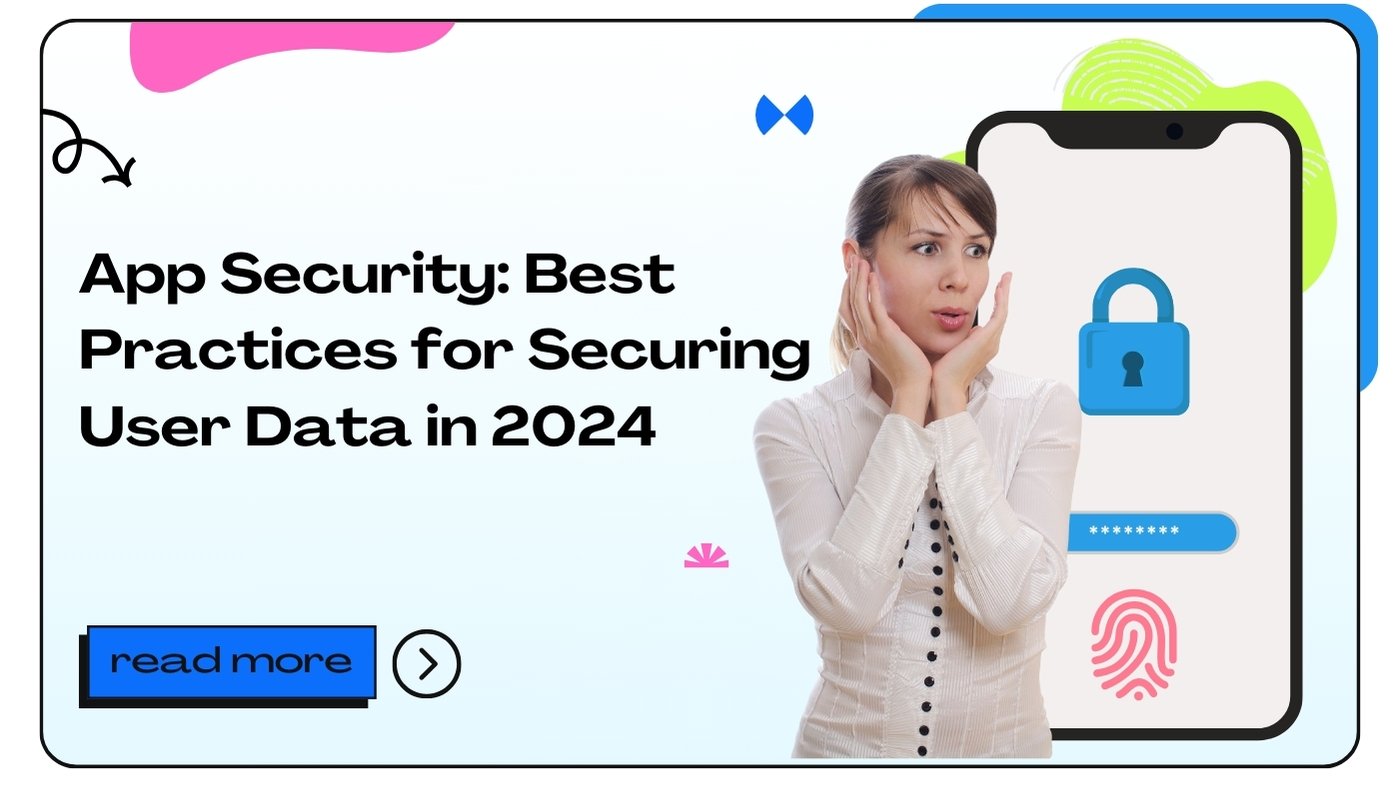As we navigate through 2024, the importance of app security has never been more pronounced. With an increasing reliance on digital platforms, securing user data is paramount for businesses and developers alike. In a world where data breaches and cyber threats are rampant, it is essential to adopt best practices that safeguard sensitive information. This article will explore effective strategies to enhance app security, protect user data, and ensure compliance with regulatory standards.
Understanding App Security
App security encompasses the measures and protocols put in place to protect applications from cyber threats and vulnerabilities. It involves securing both the application itself and the data it handles, ensuring that user information remains confidential, integral, and available.
The Importance of App Security
- User Trust: When users know their data is secure, they are more likely to engage with your app. Trust is crucial for user retention and brand loyalty.
- Regulatory Compliance: Adhering to laws like GDPR and CCPA is mandatory for protecting user data. Non-compliance can lead to hefty fines and reputational damage.
- Business Continuity: A data breach can disrupt business operations, leading to financial losses. Effective app security measures help prevent these interruptions.
Best Practices for App Security in 2024
In 2024, app security strategies must evolve to counter new and sophisticated threats. Here are some best practices that organizations should adopt:
1. Conduct Regular Security Audits
Regular security audits are essential for identifying vulnerabilities in your app. These audits help in assessing the security posture and ensuring that your app complies with industry standards.
- Automated Tools: Utilize automated tools for vulnerability scanning. Tools like OWASP ZAP and Nessus can identify common security issues.
- Manual Penetration Testing: In addition to automated scanning, conduct manual penetration tests to identify vulnerabilities that automated tools might miss.
2. Implement Strong Authentication Mechanisms
Authentication is the first line of defense in protecting user data. Implementing robust authentication mechanisms is crucial for ensuring that only authorized users can access sensitive information.
- Multi-Factor Authentication (MFA): Use MFA to add an extra layer of security. This requires users to provide two or more verification factors, making unauthorized access more difficult.
- Biometric Authentication: Incorporating biometric authentication methods, such as fingerprint scanning or facial recognition, can enhance security by leveraging unique user characteristics.
3. Secure Data Transmission
Data transmission security is vital to prevent interception and tampering. Encrypting data both at rest and in transit is essential for protecting sensitive information.
- Use HTTPS: Ensure that your app uses HTTPS for all data transmissions. This encrypts the data exchanged between the client and server, preventing man-in-the-middle attacks.
- SSL/TLS Certificates: Utilize SSL/TLS certificates to secure communications. Regularly update and renew these certificates to maintain encryption strength.
4. Regularly Update and Patch Your App
Keeping your app updated is critical for protecting against known vulnerabilities. Regular updates ensure that your app incorporates the latest security features and fixes.
- Automated Updates: Implement a system for automatic updates, allowing users to receive security patches without manual intervention.
- Monitor Security Advisories: Keep an eye on security advisories related to the frameworks and libraries you use. Update them promptly to mitigate risks.
5. Implement Data Encryption
Data encryption is a fundamental practice for protecting user data from unauthorized access. Encrypt sensitive data both at rest and in transit.
- AES Encryption: Use Advanced Encryption Standard (AES) for encrypting data. AES is widely regarded as a secure encryption method for protecting sensitive information.
- Key Management: Establish a robust key management system to protect encryption keys. This includes securely storing and regularly rotating keys.
User Education and Awareness
User education plays a pivotal role in app security. Empowering users with knowledge about security best practices can significantly reduce the risk of data breaches.
1. Promote Strong Password Practices
Encourage users to create strong, unique passwords and educate them on the importance of password security.
- Password Guidelines: Provide clear guidelines on creating strong passwords, including length, complexity, and the avoidance of common phrases.
- Password Managers: Recommend the use of password managers to help users securely store and manage their passwords.
2. Raise Awareness About Phishing Attacks
Phishing attacks remain a prevalent threat to user security. Educating users about how to identify and avoid phishing attempts is crucial.
- Identify Red Flags: Inform users about common phishing tactics, such as suspicious email addresses and unsolicited requests for sensitive information.
- Reporting Mechanisms: Establish easy-to-use reporting mechanisms for users to report suspected phishing attempts within your app.
Secure Coding Practices
Implementing secure coding practices during the development phase is essential for building resilient applications. These practices help prevent common vulnerabilities.
1. Input Validation
Validate all user inputs to prevent attacks such as SQL injection and cross-site scripting (XSS).
- Sanitize User Inputs: Ensure that all user inputs are sanitized to remove any potentially harmful code before processing.
- Use Parameterized Queries: When interacting with databases, use parameterized queries to prevent SQL injection attacks.
2. Implement Proper Error Handling
Improper error handling can expose sensitive information. Implement robust error handling mechanisms to prevent leaking sensitive data.
- Generic Error Messages: Use generic error messages that do not reveal specifics about the application or server configuration.
- Logging and Monitoring: Log errors for internal review while ensuring that sensitive information is not included in the logs.
Secure Your Third-Party Integrations
Many applications rely on third-party services and APIs, which can introduce vulnerabilities. Ensuring the security of these integrations is essential.
1. Assess Third-Party Security
Before integrating third-party services, conduct a security assessment of their practices.
- Vendor Security Policies: Review the security policies of third-party vendors to ensure they align with your security standards.
- Compliance Checks: Verify that third-party integrations comply with relevant regulations, such as GDPR or HIPAA.
2. Monitor API Security
APIs are common targets for attackers. Implement robust security measures for your APIs to protect against unauthorized access.
- API Rate Limiting: Implement rate limiting to prevent abuse and mitigate denial-of-service attacks.
- Authentication for APIs: Use OAuth or similar protocols for securing API access, ensuring that only authorized applications can interact with your API.
Conduct Security Training for Development Teams
Security training for development teams is critical for instilling a security-first mindset. By understanding the latest threats and best practices, developers can build more secure applications.
1. Regular Security Workshops
Organize regular security workshops to keep development teams informed about emerging threats and secure coding practices.
- Hands-On Training: Provide hands-on training that allows developers to practice secure coding techniques and learn from real-world scenarios.
2. Stay Updated on Security Trends
Encourage developers to stay updated on the latest security trends and vulnerabilities.
- Follow Security Blogs and Communities: Direct developers to follow industry blogs, forums, and communities focused on application security.
Regularly Test Your App for Vulnerabilities
Continuous testing is essential for identifying vulnerabilities before they can be exploited. Implement a robust testing strategy that includes both automated and manual testing.
1. Automated Security Testing Tools
Utilize automated security testing tools to regularly scan your app for vulnerabilities.
- Dynamic Application Security Testing (DAST): Implement DAST tools to test your app during runtime and identify vulnerabilities in real time.
- Static Application Security Testing (SAST): Use SAST tools to analyze source code for vulnerabilities during the development phase.
2. Manual Penetration Testing
In addition to automated testing, conduct regular manual penetration tests to identify vulnerabilities that automated tools may miss.
- Engage Security Experts: Consider hiring external security experts to perform penetration tests and provide insights on improving app security.
Establish a Security Incident Response Plan
Despite your best efforts, security incidents may still occur. Establishing a security incident response plan is critical for minimizing damage and ensuring a swift recovery.
1. Create a Response Team
Assemble a dedicated incident response team responsible for handling security breaches.
- Define Roles and Responsibilities: Clearly define the roles and responsibilities of each team member to ensure an efficient response.
2. Develop an Incident Response Plan
Create a comprehensive incident response plan outlining the steps to take in the event of a security breach.
- Containment Strategies: Include containment strategies to minimize damage and prevent further compromise.
- Post-Incident Review: Conduct a post-incident review to assess the effectiveness of the response and identify areas for improvement.
Conclusion
As we move through 2024, securing user data must remain a top priority for developers and organizations. By adopting best practices in app security, such as conducting regular audits, implementing strong authentication, and securing data transmission, businesses can significantly reduce the risk of data breaches. Educating users, training development teams, and establishing a solid incident response plan will further enhance app security and build user trust. In an era where data privacy is paramount, committing to robust app security practices is essential for success.
20 Unique FAQs About App Security
- What is app security?
App security involves the measures and protocols implemented to protect applications from cyber threats and vulnerabilities. - Why is app security important?
App security is crucial for protecting user data, maintaining user trust, ensuring regulatory compliance, and preventing financial losses from data breaches. - What are the common threats to app security?
Common threats include data breaches, SQL injection, cross-site scripting (XSS), and insecure API endpoints. - How can I secure user data in my app?
Secure user data by implementing encryption, strong authentication methods, and regular security audits. - What is multi-factor authentication (MFA)?
MFA is a security process that requires users to provide two or more verification factors to gain access to an application. - How can I encrypt data in my app?
Use encryption algorithms like AES to encrypt sensitive data both at rest and in transit. - What are some secure coding practices?
Secure coding practices include input validation, error handling, and using parameterized queries to prevent SQL injection. - How often should I conduct security audits?
Regular security audits should be conducted at least annually or whenever significant changes are made to the application. - What tools can I use for automated security testing?
Tools like OWASP ZAP, Nessus, and Burp Suite are popular choices for automated security testing. - What should I include in my incident response plan?
Your incident response plan should include containment strategies, roles and responsibilities, and post-incident review procedures. - How can I train my development team on security?
Organize workshops, hands-on training sessions, and provide resources for staying updated on security trends. - What is data encryption at rest and in transit?
Data encryption at rest secures data stored on servers, while encryption in transit secures data being transmitted over networks. - How do I monitor API security?
Monitor API security by implementing rate limiting, authentication protocols, and logging access attempts. - What are common signs of a data breach?
Common signs include unusual user behavior, unexplained data loss, and alerts from security monitoring tools. - Can app security ensure compliance with regulations?
Yes, implementing strong app security measures helps ensure compliance with regulations like GDPR and HIPAA. - What is the role of third-party services in app security?
Third-party services can introduce vulnerabilities, so it’s essential to assess their security practices before integration. - How can users protect their accounts?
Users can protect their accounts by creating strong passwords, enabling MFA, and being cautious about phishing attempts. - What are the consequences of a data breach?
Consequences of a data breach can include financial loss, reputational damage, legal penalties, and loss of customer trust. - How do I ensure secure data transmission?
Ensure secure data transmission by using HTTPS and SSL/TLS certificates to encrypt communications. - What is the first step to take after a security breach?
The first step after a security breach is to contain the incident to prevent further damage and then initiate your incident response plan.
- How to Join Two Strings in Flutter - January 2, 2025
- How to Add Icon in Flutter - January 2, 2025
- How to do Facebook Login in Flutter - January 2, 2025




















